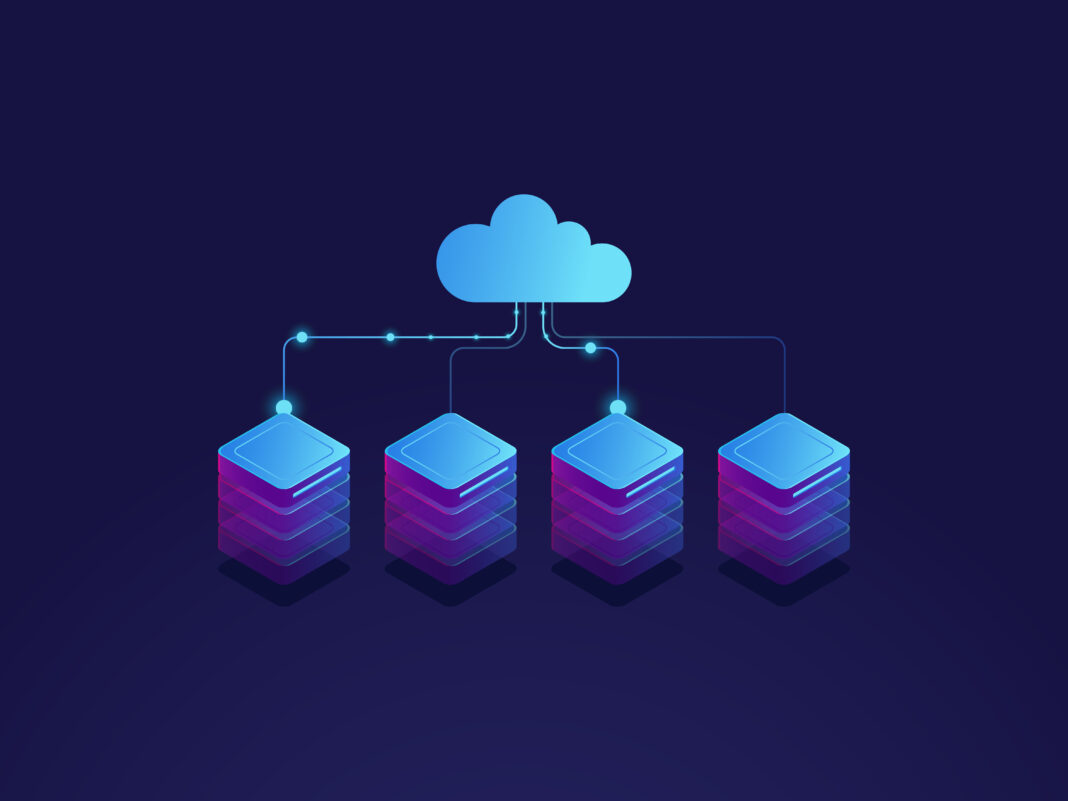Cloud infrastructure has become the backbone of modern business operations, offering scalability, flexibility, and cost-efficiency. However, as reliance on cloud services grows, so do security risks. Cybercriminals constantly target cloud environments, exploiting misconfigurations, weak access controls, and unpatched vulnerabilities.

This guide provides an in-depth exploration of cloud security, offering actionable strategies to protect your data, applications, and infrastructure. Whether you’re a small business or a large enterprise, these best practices will help you build a robust defense against evolving threats.
Cloud Security Risks in Depth
Cloud environments introduce unique security challenges that differ from traditional on-premises setups. Below, we break down the most critical risks and their potential impact.
1.1 Data Breaches and Unauthorized Access
- Causes: Weak passwords, exposed APIs, insider threats, and phishing attacks.
- Impact: Financial losses, reputational damage, and regulatory penalties (e.g., GDPR, HIPAA fines).
- Example: The 2019 Capital One breach exposed 100 million records due to a misconfigured AWS firewall.
1.2 Misconfigured Cloud Storage and Services
- Common Mistakes: Publicly accessible storage buckets (e.g., AWS S3), overly permissive IAM roles.
- Consequences: Sensitive data leaks, compliance violations.
- Prevention: Automated configuration checks using CSPM tools.
1.3 Insecure APIs and Third-Party Integrations
- Risk Factors: Poorly coded APIs, lack of authentication, excessive permissions.
- Real-World Case: The Facebook API breach (2018) allowed hackers to access 50 million user profiles.
1.4 Insider Threats and Privilege Abuse
- Types: Malicious insiders, negligent employees, compromised credentials.
- Mitigation: Role-based access control (RBAC), user activity monitoring.
1.5 Denial-of-Service (DoS) and Distributed Denial-of-Service (DDoS) Attacks
- How They Work: Overwhelm cloud servers with traffic, causing downtime.
- Protection: Cloud-based DDoS mitigation services (e.g., AWS Shield, Cloudflare).
2. Implementing Strong Access Controls
Controlling who can access your cloud resources is fundamental to security. Below, we explore best practices in detail.
2.1 Multi-Factor Authentication (MFA) – A Must-Have
- Why It Matters: Passwords alone are easily compromised.
- Best MFA Methods:
- Hardware Tokens (YubiKey, Google Titan) – Most secure.
- Authenticator Apps (Google Authenticator, Microsoft Authenticator) – Convenient and effective.
- SMS-Based Codes – Less secure due to SIM-swapping risks.
2.2 Principle of Least Privilege (PoLP) – Minimizing Exposure
- Implementation Steps:
- Audit existing permissions.
- Remove unnecessary access rights.
- Regularly review and adjust privileges.
- Tools: AWS IAM, Azure AD Privileged Identity Management.
2.3 Role-Based Access Control (RBAC) – Structured Permissions
- How It Works: Assign permissions based on job functions (e.g., “Developer,” “Finance,” “Admin”).
- Example:
- Developers: Can deploy code but not delete databases.
- Finance Team: Can access billing data but not server configurations.
2.4 Identity and Access Management (IAM) Best Practices
- Key Features:
- Single Sign-On (SSO): Centralized access control.
- Temporary Credentials: Time-bound access for contractors.
- Session Timeouts: Auto-logout after inactivity.
3. Encrypting Data for Maximum Protection
Encryption ensures that even if attackers access your data, they can’t read it without the decryption key.
3.1 Encryption in Transit (Securing Data Movement)
- Protocols to Use:
- TLS 1.2/1.3: For web traffic (HTTPS).
- IPSec VPNs: For secure remote access.
- Common Mistakes: Using outdated SSL/TLS versions (e.g., SSL 3.0).
3.2 Encryption at Rest (Protecting Stored Data)
- Best Algorithms:
- AES-256: Industry standard for file and database encryption.
- RSA-2048/4096: For key exchanges.
- Key Management:
- AWS KMS, Azure Key Vault: Secure key storage.
- Hardware Security Modules (HSMs): Physical devices for ultra-secure key handling.
3.3 End-to-End Encryption (E2EE) – Ultimate Privacy
- Use Cases:
- Messaging apps (Signal, WhatsApp).
- Secure file sharing (ProtonMail, Tresorit).
- Limitations: Can complicate backups and search functionality.
4. Continuous Monitoring and Threat Detection
Proactive monitoring helps detect and respond to threats before they escalate.
4.1 Cloud Security Posture Management (CSPM) Tools
- Top Solutions:
- AWS GuardDuty: AI-driven threat detection.
- Microsoft Defender for Cloud: Real-time security alerts.
- Prisma Cloud (Palo Alto): Multi-cloud security monitoring.
4.2 Intrusion Detection and Prevention Systems (IDS/IPS)
- How They Work:
- Signature-Based Detection: Matches known attack patterns.
- Anomaly-Based Detection: Flags unusual behavior (e.g., sudden data exfiltration).
4.3 Logging and Auditing – Tracking Every Action
- Essential Logs to Monitor:
- Authentication Logs: Failed login attempts.
- API Call Logs: Unauthorized access attempts.
- Data Access Logs: Who viewed sensitive files?
5. Securing Cloud APIs and Applications
APIs are a prime target for attackers—here’s how to protect them.
5.1 API Security Best Practices
- Authentication: OAuth 2.0, API keys (rotated regularly).
- Rate Limiting: Prevent brute-force attacks.
- Input Validation: Block SQL injection and XSS attacks.
5.2 Web Application Firewalls (WAFs)
- Top Providers:
- AWS WAF: Custom rule sets for blocking malicious traffic.
- Cloudflare WAF: Protects against zero-day exploits.
5.3 Regular Penetration Testing
- Frequency: At least twice a year.
- Methods:
- Automated Scans (Burp Suite, Nessus).
- Manual Ethical Hacking (Hired penetration testers).
6. Backup and Disaster Recovery Planning
Even with strong security, breaches happen. A solid recovery plan minimizes downtime.
6.1 The 3-2-1 Backup Rule
- 3 Copies: Original + two backups.
- 2 Different Media: Cloud + external hard drive.
- 1 Offsite Backup: Protects against physical disasters (e.g., fires).
6.2 Automated Cloud Backup Solutions
- Top Tools:
- AWS Backup: Centralized backup management.
- Veeam: Cross-cloud backup and recovery.
6.3 Testing Disaster Recovery Plans
- Steps:
- Simulate a ransomware attack.
- Restore data from backups.
- Measure recovery time (RTO) and data loss (RPO).
7. Employee Training and Security Awareness
Human error causes 95% of cybersecurity breaches (IBM Security).
7.1 Security Awareness Programs
- Topics to Cover:
- Phishing detection.
- Strong password creation.
- Reporting suspicious emails.
7.2 Simulated Phishing Tests
- How Often? Quarterly.
- Metrics to Track: Click rates, reporting rates.
7.3 Incident Response Drills
- Example Scenario:
- “An employee’s credentials were stolen. What’s the next step?”
8. Choosing the Right Cloud Service Provider (CSP)
Not all CSPs offer equal security. Key considerations:
8.1 Security Certifications to Look For
- ISO 27001: Information security management.
- SOC 2 Type II: Audited data protection standards.
8.2 Shared Responsibility Model
- CSP Responsibility: Physical security, hypervisor protection.
- Your Responsibility: Data encryption, access control.
8.3 Comparing Top CSP Security Features
| Provider | DDoS Protection | Default Encryption | Compliance Certifications |
|---|---|---|---|
| AWS | AWS Shield | Yes (AES-256) | ISO 27001, HIPAA, GDPR |
| Azure | Azure DDoS Protection | Yes (AES-256) | FedRAMP, SOC 2 |
| Google Cloud | Cloud Armor | Yes (AES-256) | ISO 27017, PCI DSS |
Frequently Asked Questions (FAQ)
Q1: What is the most common cloud security mistake?
A: Misconfigured storage buckets (e.g., leaving S3 buckets public).
Q2: How often should I rotate encryption keys?
A: Every 90 days for high-security environments.
Q3: Can I rely solely on my CSP for security?
A: No—you must implement additional controls (MFA, encryption, monitoring).
Q4: What’s the best way to detect insider threats?
A: User behavior analytics (UBA) tools track unusual activity.
Q5: How do I secure a hybrid cloud environment?
A: Use consistent IAM policies, encrypt all data, and monitor both environments.
Final Thoughts
Securing cloud infrastructure is an ongoing process, not a one-time setup. By implementing strong access controls, encryption, continuous monitoring, and employee training, businesses can significantly reduce risks. Regularly audit your security posture and stay updated on emerging threats.

